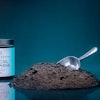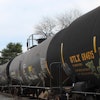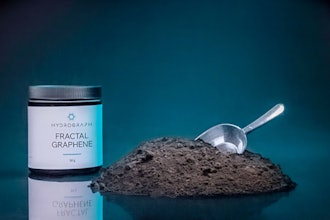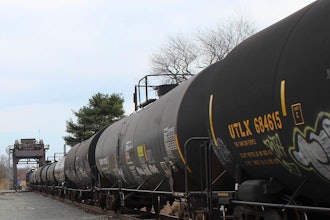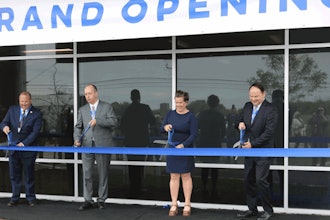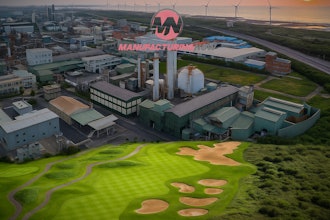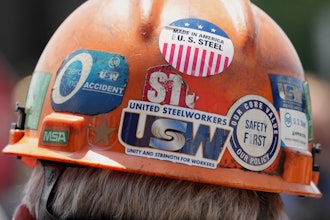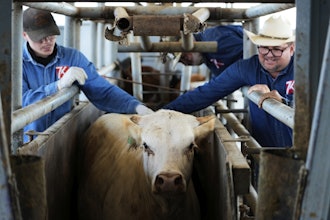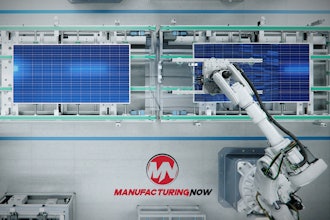For years, fiberglass-reinforced baths and showers have been perceived as commodity products. Of course, as with any product, there are quality differences between brands. Nevertheless, the manufacturing methods employed and the materials used have been similar. All that changed in 2006 when manufacturers of reinforced plastic composites were required to meet hazardous air pollutant emissions under new “maximum achievable control technology” (MACT) standards published by the EPA.
The impact of MACT on manufacturers of plastic composites had a two-prong effect. Manufacturers had to install new “capture-and-control” emissions equipment. Or, they had to reduce the level of styrene used in their resin formula, which would result is a weaker product.
Styrene is used for two purposes — as a spraying agent and as a cross-linking agent. It gives hardness and rigidity to items such as bathtubs. It’s a vital component of fiberglass reinforcement technology and, as such, is released into the air during the manufacturing process. EPA’s precautionary measures now require manufacturers to capture and control 95 percent of their styrene emissions.
1. Ignore regulations and face fines and possible plant closures.
2. Reduce the amount of styrene used in the creation of their products, resulting in a weaker product.
3. Use lower-emitting, less-effective resins. This option requires the use of more reinforcing material.
4. Invest in pollution control technologies that will capture and eliminate styrene. This option allows manufacturers to create products using the most effective and strongest formulation of materials so that the highest quality products are made.
1. After Lasco Bathware invested more than $2 million in each of its eight U.S. manufacturing plants, it was not only able to meet but also exceed new clean air standards.
2. By effectively gathering styrene and burning it in a thermal oxidizer, Lasco Bathware reduced styrene emissions by approximately 250,000 tons per year. Using the captured and incinerated styrene as a fuel, the company has also reduced its dependence on other energy sources.
3. Lasco Bathware’s response has allowed it to use the optimum formulation of styrene in its fiberglass reinforcement process, resulting in the greatest possible strength, durability, and quality for its products.
4. Lasco Bathware has also begun using state-of-the-art robotic technology in its manufacturing process. The effect is greater product quality and reliability.
According to Syd Pe, project manager at Lasco Bathware, the fuel economy provided by the Disc Concentrator System proved to be a major factor in the final decision. “We were able to increase airflow in the plants without increasing fuel consumption,” explained Pe. “We haven’t had much experience with these types of systems and felt that Dürr’s size and expertise afforded us the security we were looking for. We wanted a five-year guarantee on the absorbent and that came with the contract.”
According to Jason Valia, regional sales manager of Dürr Systems, the system was designed to operate without any natural gas consumption. The concentrator removes the styrene from the air stream and concentrates it over 10 times and then feeds it into the RTO for destruction. This provides enough energy to sustain the operation of the RTO without the addition of any external fuel. “A competitor did propose a less efficient oxidizer, a recuperative system, but there was an extremely high fuel consumption for the unit. So, short term, ours wasn’t the absolute lowest cost, but long term, ours definitely will be. Overall, the cost of ownership was much lower than the systems offered by other companies,” said Valia.
More information is available by contacting the Environmental & Energy Systems division of Dürr Systems in Plymouth, MI, at 734-459-6800 or by visiting www.durr.com .
 |
Styrene is used for two purposes — as a spraying agent and as a cross-linking agent. It gives hardness and rigidity to items such as bathtubs. It’s a vital component of fiberglass reinforcement technology and, as such, is released into the air during the manufacturing process. EPA’s precautionary measures now require manufacturers to capture and control 95 percent of their styrene emissions.
4 Options
As a result of MACT standards, manufacturers have the following options:1. Ignore regulations and face fines and possible plant closures.
2. Reduce the amount of styrene used in the creation of their products, resulting in a weaker product.
3. Use lower-emitting, less-effective resins. This option requires the use of more reinforcing material.
4. Invest in pollution control technologies that will capture and eliminate styrene. This option allows manufacturers to create products using the most effective and strongest formulation of materials so that the highest quality products are made.
Case in Point
Manufacturers that solve this problem through capital improvements are able to offer a higher quality fiberglass-reinforced bathing product. An example of such a company is Lasco Bathware, which invested more than $20 million to make MACT-compliant capital improvements and renovate its manufacturing plants. The investment provided several competitive advantages.1. After Lasco Bathware invested more than $2 million in each of its eight U.S. manufacturing plants, it was not only able to meet but also exceed new clean air standards.
2. By effectively gathering styrene and burning it in a thermal oxidizer, Lasco Bathware reduced styrene emissions by approximately 250,000 tons per year. Using the captured and incinerated styrene as a fuel, the company has also reduced its dependence on other energy sources.
3. Lasco Bathware’s response has allowed it to use the optimum formulation of styrene in its fiberglass reinforcement process, resulting in the greatest possible strength, durability, and quality for its products.
4. Lasco Bathware has also begun using state-of-the-art robotic technology in its manufacturing process. The effect is greater product quality and reliability.
Behind the Solution
For this project, the Environmental & Energy Systems division of Dürr Systems installed a Disc Concentrator System. The system included a rotary concentrator with a rotary valve RTO. The rotary concentrator, which features a proprietary material supplied by Dürr’s exclusive supplier, does not allow styrene to polymerize on its surface. Dürr was able to guarantee a five-year life for this material, which was a major selling point. A very high efficiency filter was installed upstream to remove any particulate matter coming into the airstream. By utilizing the concentrator system, the net cost increase was approximately $2 per unit, a significantly lower cost compared to the alternatives considered. Since Lasco Bathware produces greater than a million units per year, this represented a significant savings to the company.According to Syd Pe, project manager at Lasco Bathware, the fuel economy provided by the Disc Concentrator System proved to be a major factor in the final decision. “We were able to increase airflow in the plants without increasing fuel consumption,” explained Pe. “We haven’t had much experience with these types of systems and felt that Dürr’s size and expertise afforded us the security we were looking for. We wanted a five-year guarantee on the absorbent and that came with the contract.”
According to Jason Valia, regional sales manager of Dürr Systems, the system was designed to operate without any natural gas consumption. The concentrator removes the styrene from the air stream and concentrates it over 10 times and then feeds it into the RTO for destruction. This provides enough energy to sustain the operation of the RTO without the addition of any external fuel. “A competitor did propose a less efficient oxidizer, a recuperative system, but there was an extremely high fuel consumption for the unit. So, short term, ours wasn’t the absolute lowest cost, but long term, ours definitely will be. Overall, the cost of ownership was much lower than the systems offered by other companies,” said Valia.
More information is available by contacting the Environmental & Energy Systems division of Dürr Systems in Plymouth, MI, at 734-459-6800 or by visiting www.durr.com .


